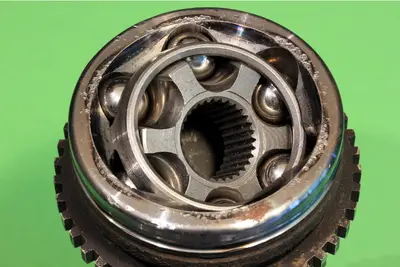What You Need to Know About Air Lockers
Without the help of a differential lock, power can only be transmitted to two wheels at any time. Air lockers are replacement differential carriers that can lock the rear and front axle shafts together or work as conventional differentials. This allows optimum drive torque to be sent to two vehicle wheels.
In addition, you, as the driver, manage the locking function. You can lock front axles, offering maximum traction, going through slippery surfaces, and unlock them again for complete steering capacity. Outlined below is what you need to know about air lockers.
1. What is differential?
Your 4X4 wheel drive has a rear and front differential, which is meant to apportion power or drive to either the right or left wheel on every axle. The drive's delivery to one side of the automobile lets the right and left wheels spin at varying speeds, which is vital for on-road cornering. Once you're off the beaten track and a single wheel is sitting on a pretty slippery surface or suspended in the air, the locking differential will deliver drive to the wheel without traction only. This works against 4-wheeler drivers as you're likely to find yourself in a challenging situation where a single wheel on the rear axle and another on the front axle has little or no traction, hence, no drive.
2. When to use air lockers
Different drivers engage air lockers at varying times based on the vehicle, driver skill, tires, approach angle, and more. Nonetheless, it's advisable to engage air lockers when driving through a low-traction trail, whether overly uneven or slippery, resulting in the wheels lifting. Changing the differential to locked sends equal power to both wheels. This means one wheel strongly planted on the ground and the other off the ground will have equivalent power, letting the wheel with the highest traction push your vehicle forward to continue on the trail.
If you already have a premium quality air locker like ARB air locker fitted to your vehicle’s rig, then you might have noted that it’s been wired in a way that you must turn on the rear before turning the front. This is a safety measure meant to ensure that users don't switch on their front locker accidentally when it isn't needed. A locked front differential will alter how your car steers in comparison to when it's locked, which can be frightening if you don't anticipate it.
The lockers aren’t necessary when driving on easy 4-wheel-drive trails or dirt roads. If you cannot study a hard track well and are uncertain of the terrain, consider engaging the rear differential lock first. If you're still facing challenges, take your foot off the accelerator for a while, then engage the front air locker, too. Avoid engaging either of the air lockers when hard on the accelerator and with the wheels spinning, as this can damage the air locker and other drivetrain parts.
3. Benefits of air lockers
Air lockers offer multiple benefits, including:
● Flexibility: They're only engaged when required, and they can be installed in front and rear axle applications. in addition, individual switches control the front and rear locker, which engage and disengage them independently, giving you more flexibility and control when driving on challenging off-road terrains.
● Variety: Air lockers come in various styles, giving you more options Endnote Air lockers come in handy for 4-wheel drivers. Understand what you need to know about air lockers before investing in one.
Endnote
Air lockers come in handy for 4-wheel drivers. Understand what you need to know about air lockers before investing in one.



